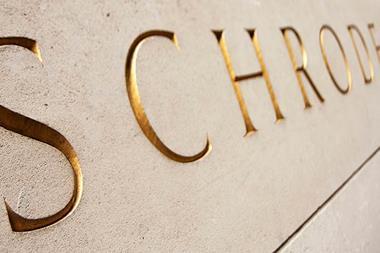Compenswiss, the public institution managing Switzerland’s first pillar social security funds AHV, IV and EO, with CHF40bn (€40.9bn) assets under management, plans to increase its allocation to private debt to approximately 3% of its overall portfolio, or around CHF1bn in the next three to five years, chief investment strategist and member of the executive committee Frank Juliano told IPE.
The pension fund will invest in closed funds and evergreen funds on the path to expanding its private debt programme.
It has finalised its due diligence process for the latest manager selection, shortlisting asset managers to start investing in the asset class in Europe and in the US.
“We will probably launch another tender for a manager selection in two years’ time to complete the portfolio, to diversify across regions and vintages in order to capture a whole investment cycle,” Juliano added.
The pension scheme is pursuing a more robust diversification, capturing illiquidity premium, as the bulk of its investments is still invested in fixed income.
“We have seen that large companies tend not to opt for syndicated loans anymore, [therefore] the private debt segment becomes more attractive for those firms, meaning that there is a good pipeline of deals,” the CIO added.
Last year, the Swiss people narrowly approved in a referendum the reform of the first pillar pension system, which will come into effect on 1 January 2024.
The reform lifts the retirement age for women from 64 to 65 years old, the same as for men, and the VAT by 0.4 percentage points to fund and reinforce the stability of the first pillar pension scheme.
“Until last year, our time horizon was shorter, now with the reform, the assets will increase by approximately CHF10bn in the next five years before decreasing again, postponing the need for an orderly liquidation of part of the fund. Our time horizon is thus longer, and we can afford to invest more in less liquid assets,” Juliano said.
Catching up on US real estate
Compenswiss will relax its allocation constraints to private debt and real estate to see whether it can add further investments to its portfolio.
“We may also envision [to add] other private asset classes, but [that’s] subject to further analysis and approval,” the CIO said.
The pension fund has been investing in private real estate, core funds first and lately core plus funds, in Asia and in Europe initially, starting in the US a few years ago.
It invests in Europe and in Asia through several funds, and in the US only through four funds, therefore it plans to increase the share of investments in the US, and has decided to tender a mandate for core+ investments in real estate in North America.
“We are catching up in the US real estate investments today. We have 8-9% invested in foreign private real estate, 5% in Swiss real estate funds. We have replaced the REITs portfolio, only liquid investments since 2013, with private real estate funds. Now we only have a minor share of REITs in our portfolio,” Juliano explained.
Compenswiss has increased its target allocation to real estate over the year to 15% of the whole assets invested this year, including 5-6 Swiss funds and 8-9 foreign funds.
“Real estate is still interesting in terms of construction of the portfolio, but we’ll likely pause at 15% for the time being, because in Europe and in the US performances are struggling currently,” the CIO said.
The latest digital edition of IPE’s magazine is now available

































No comments yet